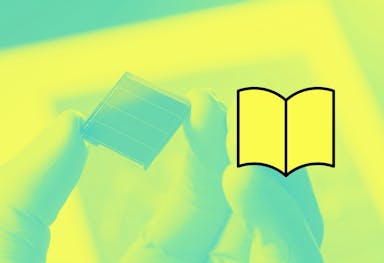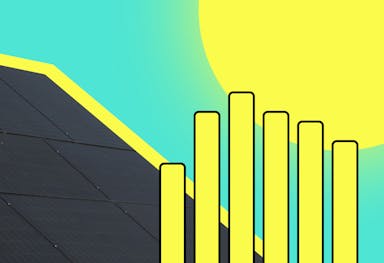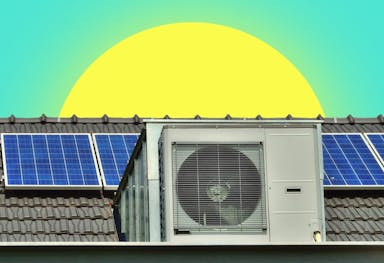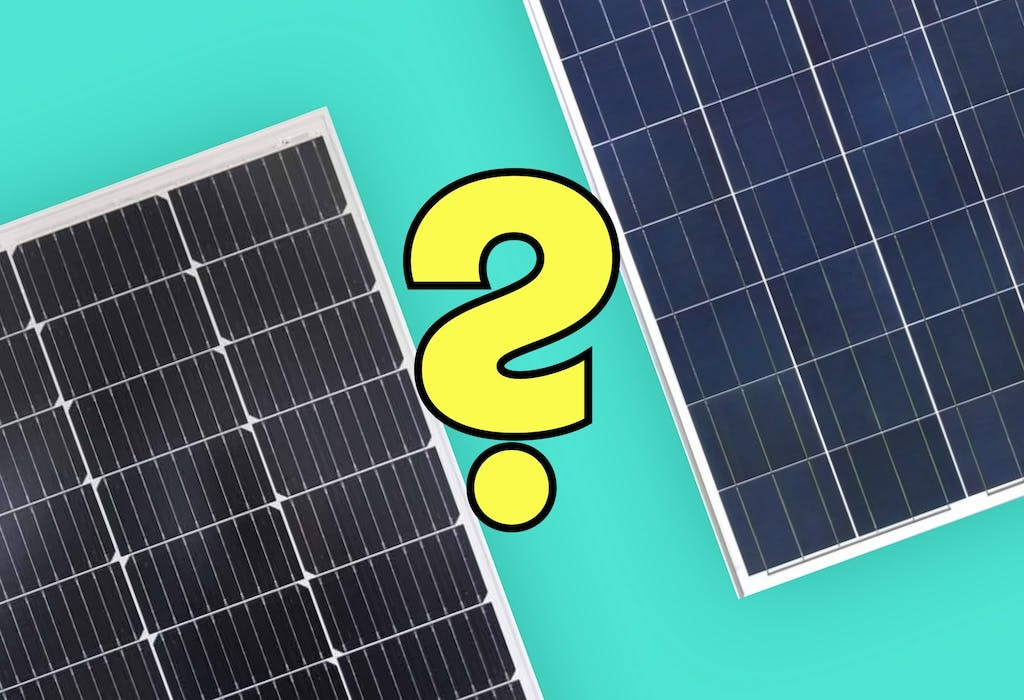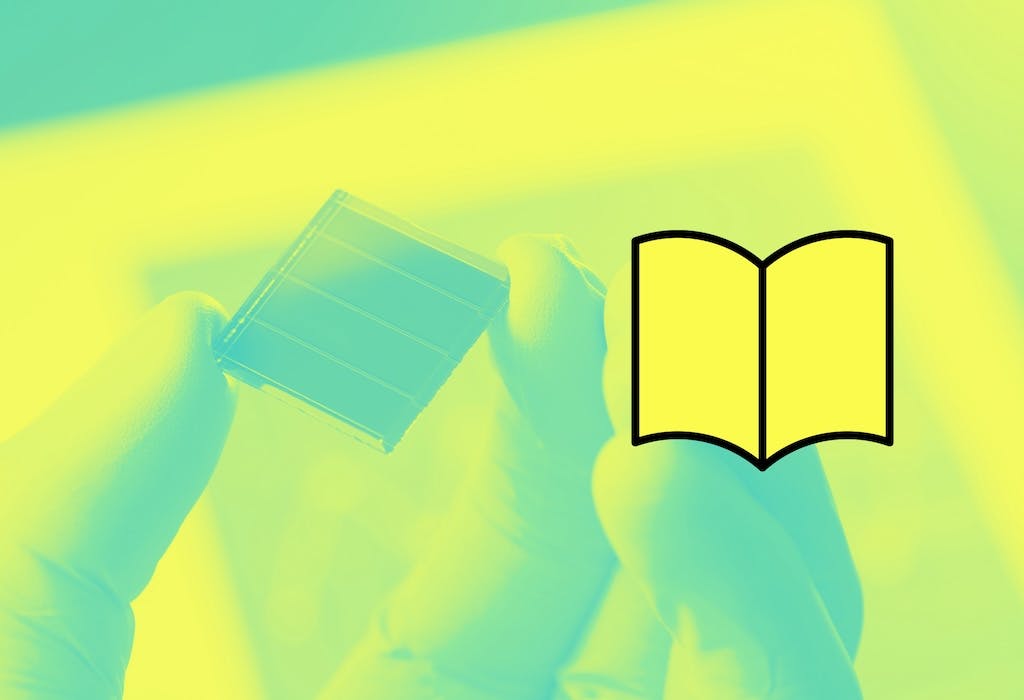- Solar advice hub
- Solar-technology
- The 6 different types of solar panels
The 6 different types of solar panels
Discover the six main types of solar panel, including thin-film, perovskite, and the best type for your home: monocrystalline.
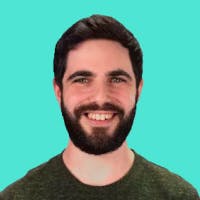

Why you can trust our content
We know that the solar industry is full of misinformation, but we only use reliable sources, including:
- Our experienced solar experts, installers and system designers
- Our own database of solar & battery system designs
- Authoritative bodies like MCS and the UK government



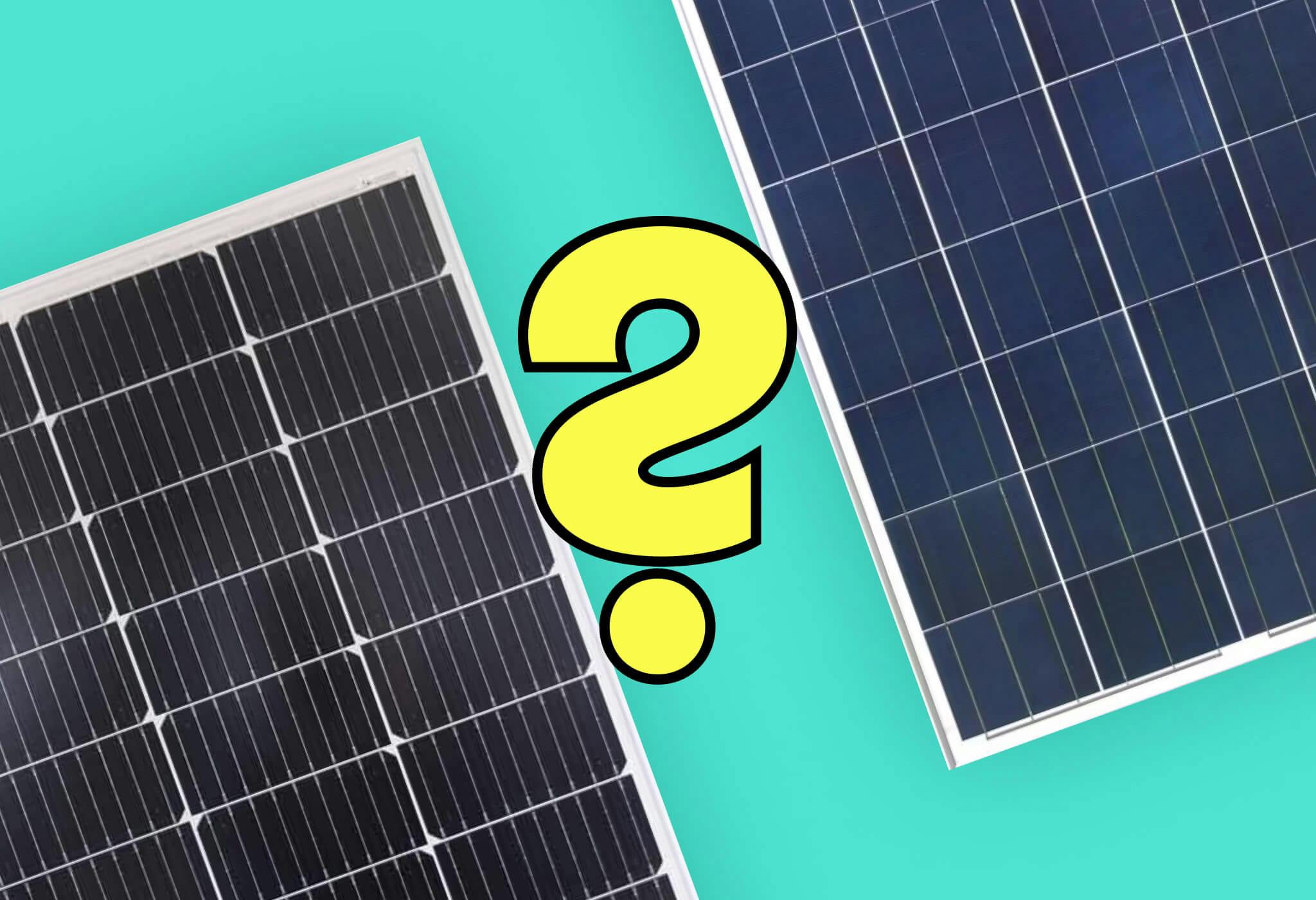
Calculate savings
What kind of home do you live in?
Calculate savings
What kind of home do you live in?
Solar panel types: at a glance
When you’re considering whether to get solar panels, it’s a good idea to look into all the different types, to ensure you choose the best system for your home.
In this guide, we’ll run through all the main types of solar panels, their advantages and disadvantages, and which panels make the most sense for different purposes.
We’ll also take a look at new and developing solar panel technology, and explain which type of panel is the best overall.
To learn how much a solar & battery system could save you on your energy bills, simply answer a few quick questions below and we’ll provide an estimate.
Find out how much you can save
What kind of home do you live in?
What are the main types of solar panels?
The six main types of solar panels are polycrystalline, monocrystalline, thin-film, transparent, solar tiles, and perovskite.
All of these are photovoltaic panels – meaning they use daylight to generate electricity – and they’re all categorised based on their material.
| Type of solar panel | Average efficiency | Typical lifespan (years) | Key advantage | Key disadvantage |
|---|---|---|---|---|
| Polycrystalline | 18-21% | 25-30 | Cheaper than monocrystalline | No longer available |
| Monocrystalline | 20-25% | 30-40 | Most efficient type available | More expensive than some types |
| Thin-film | 17-19% | 10-20 | Most flexible option | Low power output |
| Transparent | 1% | 25-35 | Blends in with windows | Low efficiency |
| Solar tiles | 10-20% | 25-30 | Blends in with roofs | Very expensive |
| Perovskite | 29-31% | 25-35 | Highest efficiency | Not yet available |
1. Polycrystalline solar panels
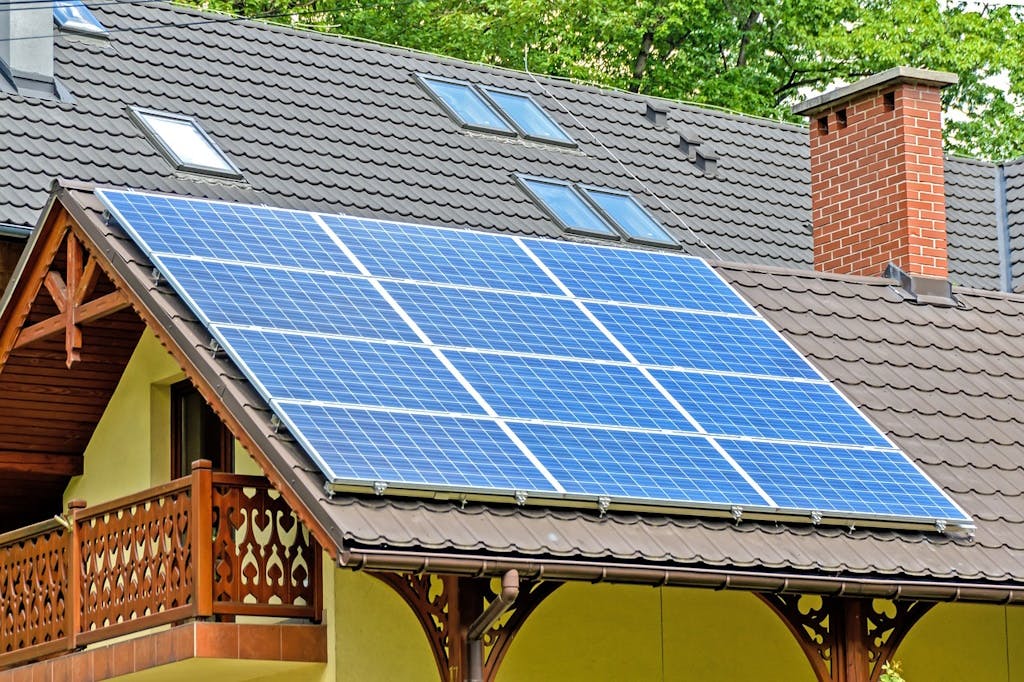
- 18-21% efficiency
- Lifespan of 25-30 years
Polycrystalline solar panels are one of the oldest types of solar panel in existence, and now account for 0% of global production, according to the National Renewable Energy Laboratory (NREL).
Their cells are made by melting multiple silicon crystals and combining them in a square mould.
These blue panels are less efficient, less aesthetically pleasing, and less long-lasting than black monocrystalline panels.
And though they’re technically cheaper, this comes with a large drawback: they take up far more space, because they’re significantly less efficient.
Since 1984, the record efficiency of polycrystalline cells has increased from 15% to 23.3%.
This is a decent level, but it’s way behind monocrystalline, which hit 24% all the way back in 1994, according to the NREL.
Since panels always lag behind cells in efficiency terms, the average polycrystalline panel today is even less impressive, at just 14.5%. This makes it 31% worse than the average monocrystalline panel, which is 21% efficient.
To achieve a certain level of output, you'll therefore need a higher number of polycrystalline panels than you would monocrystalline panels.
When considering the lifetime cost of solar panels, it’s almost always better to cover your roof with as many panels as you can, to generate the most electricity possible.
Polycrystalline panels won’t get the best out of your roof space, since they're not particularly efficient in the first place, and they're only available second-hand – which usually means a further drop in efficiency.
Pros and cons of polycrystalline solar panels
2. Monocrystalline solar panels
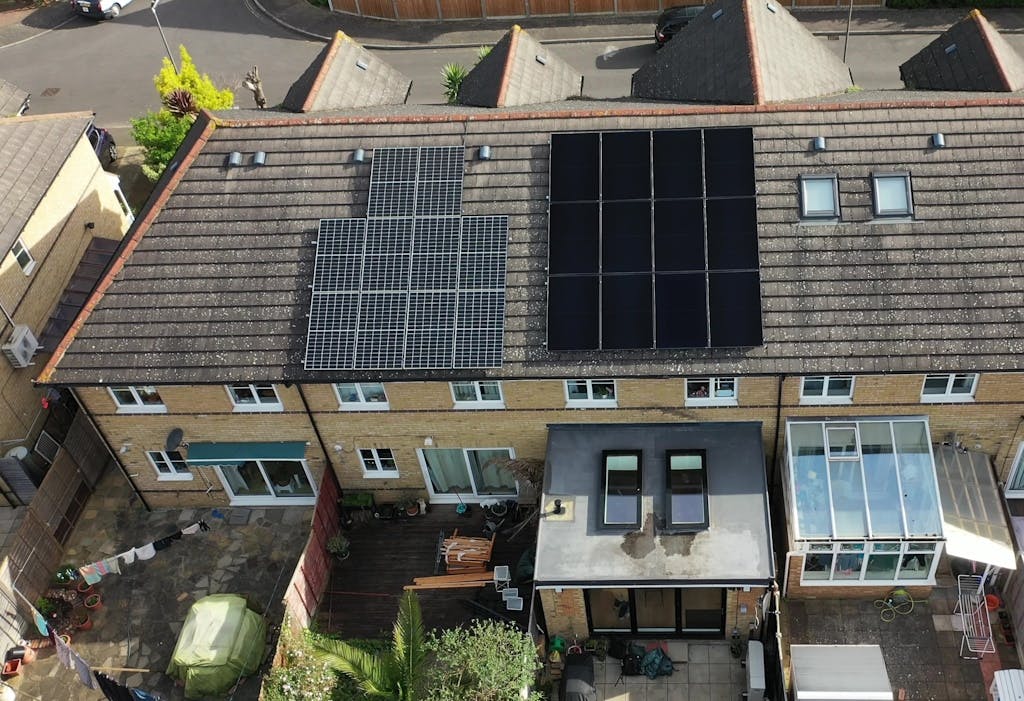
- 20-25% efficiency
- Lifespan of 30-40 years
Monocrystalline solar panels are the most efficient type of solar panel currently on the market.
The top monocrystalline panels now all come with 22% efficiency or higher, and manufacturers are continually raising this bar.
These sleek, black panels are made from single-crystal silicon – hence their name and dark appearance – and treated with an anti-reflective coating that removes their grey undertones, making them look even darker.
They also have a longer lifespan than any other type, on average, often outlasting their already lengthy performance warranties, which can stretch to 30 years.
Monocrystalline is currently the most cutting-edge solar material, too – bifacial solar panels are usually made with monocrystalline, for instance.
For all these reasons, 98% of global solar panel shipments in 2023 were made with monocrystalline, up from 35% in 2015, according to the NREL.
We have Polish scientist Jan Czochralski to thank for the creation of monocrystalline panels.
In 1916, the 31-year-old absent-mindedly dipped his pen into a crucible of molten tin instead of his inkwell, hurriedly took it out – and withdrew a narrow thread of metal at the same time.
This was the eureka moment that enabled monocrystalline silicon production.
The Czochralski method, which was modelled on this accident, was crucial in Bell Labs researcher Russell Ohl’s development of the first monocrystalline cell 25 years later, in 1941 – and that’s not all.
This method is still used in the great majority of electronic goods around the world, from mobile phones and televisions to washing machines and fridges.
Pros and cons of monocrystalline solar panels
On average, monocrystalline solar panels are 31% more efficient than their closest rival, last around 18% longer, and are produced by all the leading solar manufacturers.
The only major drawback when it comes to monocrystalline panels is they’re usually more expensive than other widely available types – but that's inevitable, since they're better.
After all, the most efficient and most powerful solar panels on the market are all monocrystalline. If you can afford them, they’re usually worth it.
And if you opt for Sunsave Plus, you’ll avoid paying anything upfront.
You'll also be covered by the 20-year Sunsave Guarantee, which includes 24/7 monitoring, free replacement parts (including a battery and inverter), and downtime cover – and your system will be insured by Aviva against damage, fire, and theft.
If you’re wondering how much you could save with a solar & battery system, enter a few details below and we’ll provide an estimate.
Find out how much you can save
What kind of home do you live in?
3. Thin-film solar panels

- 17-19% efficiency
- Lifespan of 10-20 years
Thin-film solar panels are flexible sheets that can wrap around objects, making them perfect for properties with a limited amount of unobstructed roof space, or mobile homes like recreation vehicles and houseboats.
They’re thousands of times thinner than the average monocrystalline panel, which gives them their malleable nature.
Manufacturers create them by stacking several layers of solar material, like amorphous silicon, cadmium telluride, and copper indium gallium selenide.
The creation of thin-film panels was kick-started by NASA in 1961, when the Photovoltaic Fundamentals Section at its Ohio research centre started developing the technology.
They’ve since been used in space , with their flexibility and resilience proving an advantage over other types of panels when it comes to extraterrestrial uses.
ARCO Solar released the first commercial thin-film solar panel, the G-4000, in 1986, and they’ve been on the market ever since.
Thin-film efficiency levels are usually lower than those of monocrystalline panels, but they tend to still be pretty decent.
Cadmium telluride (CdTe) panels, one of the most popular thin-film varieties, are around 17-19% efficient.
The average for installed CdTe panels in the US in 2023 was 18.6%, according to the NREL, up massively from 11% in 2010.
There are other thin-film types – the main one being copper indium selenide (CIS) and its related variation, copper indium gallium selenide (CIGS) – but CdTe is far and away the most popular.
Kesterite is another thin-film technology that's starting to make waves in the industry, and we'll go into more detail about it below.
Thin-film efficiency is substantially lower than most other types of solar panels, though this is usually reflected in their relatively low prices.
However, since demand isn’t particularly high for thin-film panels, the amount you pay will mostly come down to who your local supplier is.
Pros and cons of thin-film solar panels
4. Transparent solar panels

- 1% efficiency
- Lifespan of 25-35 years
If they reach their final form, transparent solar panels could be efficient, fully see-through sheets of solar material, mostly made of glass, that replace windows, roofs, and phone screens all over the world.
Right now, if we focus on fully transparent panels, they’re behind other models in the industry, with an efficiency of just 1%.
However, semi-transparent panels – which are just 40-50% see-through – are around 20% efficient.
In 2014, a team of researchers at Michigan State University (MSU) created a 100% transparent cell, but with an efficiency of around 1%.
This cell was a transparent luminescent solar concentrator (TLSC) – a small, specially treated panel of glass surrounded by a narrow frame of solar material.
There are other transparent cells made with monocrystalline or CdTe, but since the solar material involved is encased in glass, they’ll never be more than about 50% transparent.
In the years since, the industry hasn’t managed to turn MSU's breakthrough into a commercially viable TLSC panel with a higher efficiency rating than 1%.
And unless their efficiency rises dramatically, 100% transparent panels won’t be suitable for domestic properties.
A handful of locations around the UK have used semi-transparent panels, such as Gloucestershire County's Council Hall, Bournemouth University, and the Barbican Theatre in London.
These systems are made with monocrystalline or CdTe cells, and are about 20% transparent.
Semi-transparent panels like these are good for large buildings, including office blocks and skyscrapers, where they can make enormous energy savings across the hundreds of windows they replace.
Pros and cons of transparent solar panels
5. Solar tiles
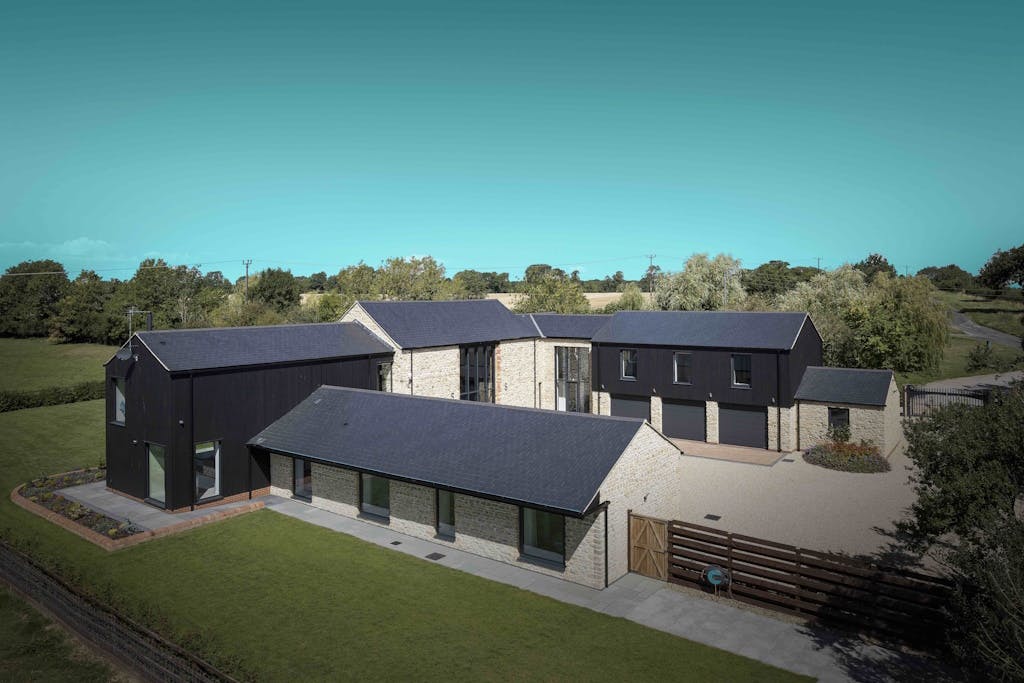
- 10-20% efficiency
- Lifespan of 25-30 years
Solar tiles produce electricity in the same way as monocrystalline or polycrystalline panels, but they’re built to replace all your roof tiles.
They're made by incorporating solar material – usually monocrystalline, but sometimes thin-film – into a normal roof tile of any style during the manufacturing process.
For people who are worried that panels will look unsightly on their roof, or who are struggling to get planning permission in a conservation area, solar tiles might be a solution – but they come at a price.
The process of replacing every tile with a solar one is typically around 50% more expensive than a monocrystalline solar panel system, roughly 30% less efficient, and takes about three times longer.
It's also a common misconception that solar tiles are always an alternative for listed buildings.
In July 2024, Historic England advised that though solar tiles are "acceptable in some cases", they "would not be suitable for prominent roof slopes where panels would also be unacceptable."
Solar tiles should last 25-30 years, which is decent, but since they were only introduced to the UK market in the decade or two, there are no guarantees.
They first became commercially available in the US in 2005, but progress since then has been slow, and they haven’t proved popular in the UK.
The product has been beset by false starts. American multinational company Dow unveiled its solar tile to great fanfare in 2009, leading Time Magazine to call it “one of the 50 best inventions” of the year.
But Dow scrapped its solar tile product line in 2016 , and its most famous successor, Tesla’s Solar Roof, still isn’t available in the UK. That’s despite Elon Musk announcing in spring 2019 that it’d be launching in summer 2019.
To learn more, check out our full guide to solar roof tiles.
Pros and cons of solar tiles
6. Perovskite solar panels
- 29-31% efficiency
- Lifespan of 25-35 years
These panels are at the forefront of solar innovation.
They’re made with perovskite, a synthetic material based on the crystal structure of a mineral that’s (confusingly) also called perovskite.
A layer of this material is placed on a layer of silicon to create a ‘tandem’ panel – the advantage being that silicon can absorb light from the red part of the spectrum, and perovskite can absorb light from the blue end.
The perovskite mineral was first discovered by German scientist Gustav Rose in 1839, in Russia’s Ural Mountains. He named it after Lev Perovski, a fellow mineralogist who was serving as a minister under Russian Emperor Nicholas I.
Researchers have attempted to use its structure for electronic purposes since the 1950s, but it was only successfully incorporated into a solar cell in 2009, when University of Tokyo scientists made a perovskite cell with 3.8% efficiency.
Since then, progress has been rapid. In June 2024, researchers at Chinese solar company LONGi created a perovskite-silicon cell with a record-breaking 34.6% efficiency.
In June 2025, China's GCL broke the record for a whole panel, achieving a 29.51% efficiency rating – and just a few days later, rival firm Trina Solar went one better with a panel that's 30.6% efficient.
These panels aren’t currently commercially available though, and if they do arrive on the market, they’ll likely be very expensive.
To learn more, check out our full guide to perovskite solar panels.
Pros and cons of perovskite solar panels
What’s the best type of solar panel?
The best type of solar panel is monocrystalline.
They’re more efficient than any other panel currently on the market, meaning you’ll be making the best use of your roof space.
And they have longer lifespans than all their competitors, which boosts their return on investment beyond that of polycrystalline panels or solar tiles.
At some point in the long-term future, perovskite panels may take over as the best type, but even at that point, they're likely to start off on solar farms. They'll also be extremely expensive, at least at first.
What’s the best type of solar panel for you?
The best type of solar panel for the majority of households is monocrystalline, as they’re the most efficient, long-lasting, and cost-effective panel available right now.
Solar tiles are much more expensive than on-roof panels, but if you live in a conservation area, they may be the answer.
In contrast, listed building owners will need to get planning approval for standard panels in order to use solar tiles.
If you’re looking to put solar panels on a mobile home instead of a house, you’ll probably want to go with thin-film panels, which suit the less flat and sturdy roofs of caravans, houseboats, and recreational vehicles.
Future solar panels
Scientists around the world are constantly researching and developing technology that could potentially revolutionise the solar industry.
There are countless ways in which solar panels could be altered to improve their efficiency levels, lifespan, peak power ratings – and researchers are investigating all of them.
This enthusiasm for solar technology is down to its skyrocketing popularity. In the UK alone, the number of households with solar panels has increased by around 5,000% since 2010.
These innovations are the three most notable creations worth focusing on at the moment.
If you'd like to learn about other exciting developments in the industry, check out our guide to the best new solar panel technology.
1. Quantum dot solar cells
Quantum dots are tiny balls made from semiconducting nanocrystals that could replace all the relatively bulkier semiconducting material that goes into modern solar panels.
They’re also known as artificial atoms because of their size, which is just a few nanometres – or roughly 338 million times smaller than the average Brit.
These nanoscopic dots absorb much more of the light the sun sends – including ultraviolet light – which could massively expand a solar panel’s efficiency, all the way up to 66%.
As a result, they could be the driving force behind considerably lighter, more effective solar technology at some point in the future. Currently, the efficiency record of a quantum dot solar cell is 18.1% – so there’s a way to go.
2. Kesterite solar cells
Kesterite solar cells are a type of thin-film technology with a promising set of attributes.
Also known as sulfide kesterite cells, this product has a similar structure to the most popular type of thin-film cell – CIGS – but with a couple of key advantages.
Firstly, this new thin-film technology is made from abundant, non-toxic, and relatively cheap raw materials including copper, sulfur, tin, and zinc.
This sets it apart from CIGS cells – which require a rare, expensive element called indium – and CdTe cells, which include a toxic element called cadmium.
It can also absorb a different part of the light spectrum to silicon cells, so using it in a tandem cell with silicon could be extremely effective.
And its close structural resemblance to CIGS means that manufacturing facilities set up to put together CIGS cells could also produce kesterite cells.
The main challenge at the moment for kesterite researchers is to make solar cells that are commercially viable, which means creating a cell that's around 20% efficient.
Kesterite cells have quickly reached 13.2% efficiency , but the next step up could take a while.
3. Zombie solar cells
Zombie solar cells came from the realisation that a burgeoning solar technology called dye-sensitised solar cells can continue functioning after their assumed death – and even better than they did before.
Normally, these cells use a dye compound that absorbs light and sends electrons to be gathered by a liquid electrolyte and turned into electric current.
But when scientists replaced the liquid electrolyte with a dry version, it produced more electricity, to the extent that zombie cells have reached 30-34% efficiency.
Smart zombie solar cells are also in development, which can absorb indoor light and turn it into electricity.
4. Organic photovoltaics
Organic solar cells generate electricity in the same way as standard panels, but they use organic semiconductors instead of silicon.
Panels using this organic material, which usually consists of carbon-based polymers, have reached 19.3% efficiency so far , but are still near the start of their development process.
Using organic semiconductors would make panels lighter, more flexible, able to absorb a larger part of the electromagnetic light spectrum, and more sustainable.
Find out how much you can save
What kind of home do you live in?
Solar panel types: FAQs
Related articles

Written byJosh Jackman
Josh has written about the rapid rise of home solar for the past six years. His data-driven work has been featured in United Nations and World Health Organisation documents, as well as publications including The Eco Experts, Financial Times, The Independent, The Telegraph, The Times, and The Sun. Josh has also been interviewed as a renewables expert on BBC One’s Rip-Off Britain, ITV1’s Tonight show, and BBC Radio 4 and 5.



